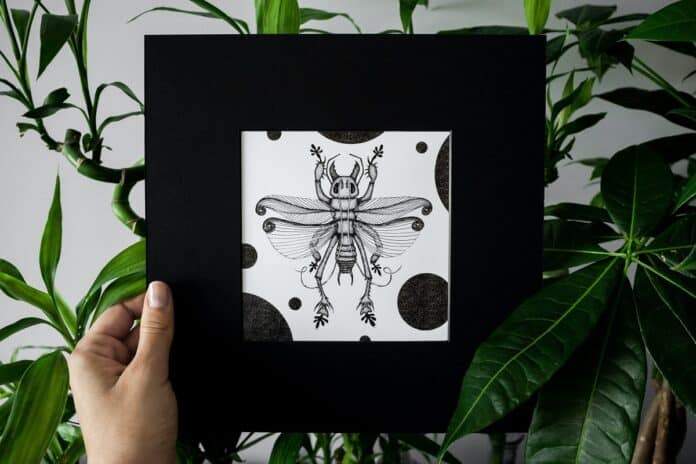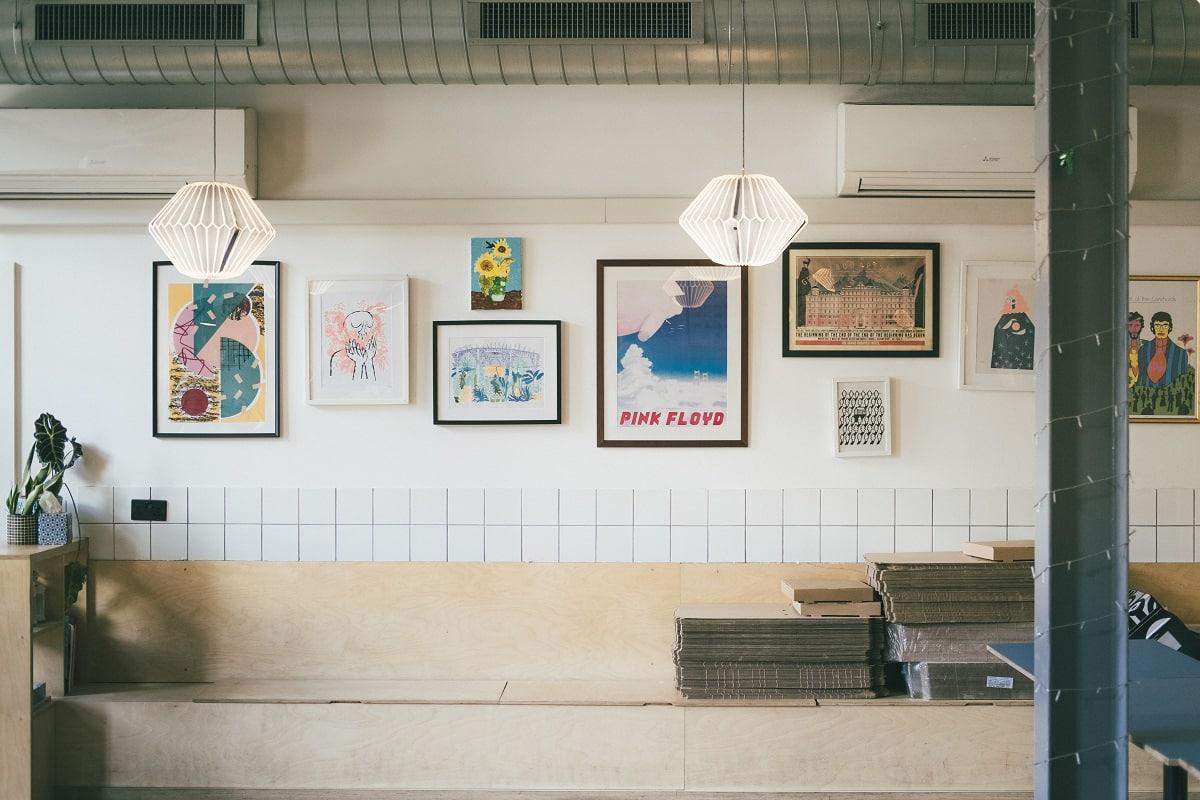
Disclaimer | This article may contain affiliate links, this means that at no cost to you, we may receive a small commission for qualifying purchases.
For DIY artists, creating artwork is fun, relaxing, and rewarding, be it on paper, metal, fabric, or any other surface.
And rightly so, since art fuels imagination, opens the mind to possibilities, and makes creativity flow. Out of all the artistic processes, printmaking has its own place in the world of art because the creations produced through its techniques are one-of-a-kind.
Though it originated during the reign of the Han Dynasty, printmaking at home it’s considered one of the most popular art forms even in the 21st century. Now we have various types of top notch printers for art prints to help out in speed and easy printmaking.
However, despite being one of the oldest art forms, not everyone is well-versed with printmaking processes, and searches for how to do printmaking are quite popular. That’s why we decided to put together a guide. In this article, we’ll walk you through the nitty-gritty of printmaking. You can get inspired on how to start a wall art print business or start an art print business, right away!
Let’s get started!
Printmaking At Home – Introduction

Even in the digital age, creating artwork is one of the most satisfying experiences for an artist. And recently, printmaking techniques have been making rounds among the artists because no two prints are the same.
Earlier, printmaking was used as a form of communication but came to be regarded as an artistic process of transferring images from one surface to another. More often than not, the ink is applied to a matrix which is later pressed onto another surface to create an original print.
And the best part is that you can re-create the print multiple times on any surface by inking and pressing the matrix over and over again. Besides paper, you can also replicate the print on wood, metal, or any other surface.
So, whether you’re a budding artist or a pro who sells artworks to make a living, it’s time you started printmaking and taking your artistic skills a notch higher than others.
How To Do Printmaking With Various Techniques
Making a print can be as easy as pressing an inked matrix on a surface or as challenging as kindling a chemical reaction to create an image.
From creating soft textures to emphasizing lines, the opportunities with the printmaking art form are endless, and that’s why artists employ various techniques to yield different effects. While knowing the jargon isn’t required to appreciate an artwork, understanding the technique will help you recognize an artist’s effort.
Here we have outlined the ten most widely used printmaking techniques that you’re sure to come across in the world of art.
1. Relief Techniques
Relief printing is a blanket term often used for describing the procedure of printing from a carved surface by pressing it onto the other area using either linoleum or wood.
A. Linocut
Emerged in the 20th century, linocut is a type of relief printing that was popularized by the Spanish painter Pablo Picasso and is used by artists to create their art pieces. To create artworks through linocuts, you’ll have to carve your drawing on a soft linoleum block, spread a thin layer of ink on it, and press paper to transfer the image.
Since linoleum is a flat surface having no directional grain, you can carve anything you want using knives, gouges, woodcuts, or other engraving tools. And as linoleum isn’t expensive, this technique is considered ideal for those enthusiasts who are or have just ventured into the printmaking world.
Furthermore, it’s a relatively thin and delicate material, so you won’t face any issues while passing the print to other surfaces. You can use either a barren or the back of the spoon and press the inked surface against the barren one to transfer the carved image.
Though carving images is easy, you must keep in mind that it won’t create fine lines on the surface.
B. Woodcut
Those relying on power tools to pull off their DIY art projects will find the woodcut technique perfect for creating out-of-the-ordinary artworks.
Introduced in the 8th century, the woodcut technique is regarded as the oldest and most straightforward method. With its emergence, it transformed the world of printmaking and also revolutionized people’s potential to access literature and art.
Much like linocut, transferring images to surfaces using the woodcut technique is easy. All you need to do is carve the image into the woodblock, apply ink and press it on your canvas to transfer.
In the beginning, this relief print technique was used to print content and images; however, it was limited to only famous works, such as the Buddhist sutras and the Bible. After all, carving details of the image on the wood was a back-breaking task, so it was used only for important works.
2. Intaglio Techniques
Instead of pressing the printing ink onto the uppermost surface, the intaglio printmaking technique involves cutting grooves or incisions into the surface of the plate. The incisions are then covered with ink while the extra is removed from the adjacent surfaces. Finally, it’s placed onto the printing press.
A. Drypoint
In drypoint, sharp hand tools or pointed instruments are used to make marks on the plate, which are then pressed onto a paper, fabric, metal, or other surfaces to transfer the image. Since images are carved using hands, it’s a reasonably complex printmaking technique to master.
More often than not, it is used on soft copper plates, and it becomes less apparent after it’s printed.
B. Engraving
Another intaglio printmaking technique is engraving, in which artists use a burin to incise the metal plate. Of course, not everyone is skilled in using a burin as it is pushed at different degrees and angles to achieve the desired image – no wonder it isn’t ideal for beginners.
To begin with, you’ll have to carve images on the matrix using a burin – a sharp steel rod with an oblique tip connected to a rounded top to grasp it firmly. As soon as you start digging, metal will peel back, forming a V-shape groove.
Traditionally, Etruscans, Greeks, and Romans used engraving techniques for decorating objects, but it was employed for printmaking only in the mid-15th century in Germany.
Though the process may sound simple, using a burin is no easy feat. Not to forget, the plate is unforgiving, which means you’ll have to strike its back to place the metal back and use a scraper and burnisher to smooth it out.
C. Etching
Unlike engraving, the etching technique is characterized by making marks or incisions on the plate through a process called ‘biting.’
Artists start by spreading a thin wax-like layer onto the plate, then drawing the design using a needle by scratching the surface and coating it with oil-based inks. After that, it’s immersed in acid, which creates fine incisions by etching the drawn mark.
Note that the final print depends on the tool used to create incisions, the coating used, and how long the plate was immersed in the acid. Out of all the procedures, etching is one of the most versatile intaglio techniques that artists rely on for their printmaking projects. And the best part is that it can be used in combination with other printmaking techniques, which is impressive.
D. Aquatint
Originated in the late 1800s, aquatint has become quite popular in the printmaking world because of its visual qualities that resemble watercolor. Though similar to etching in the procedure, aquatint focuses more on shapes than lines.
More often than not, copper or zinc plates are used for this technique, onto which tiny particles of rosin are applied and placed on top of a hot ring to melt it. As soon as the plate is heated, it’s immersed in acid, which eats away bits of exposed metals between the rosin, while the grainy surface holds ink.
Keep in mind that the longer you leave the plate in the acid, the darker the tone will become. Also, you can use liquid stop out to create a variety of tones by removing the plate and coating it multiple times.
3. Stencil Techniques
Are you a novice or a weekend warrior who wants to create a decent piece of art without undertaking back-breaking tasks? Well, stencil techniques are the best way forward to venture into the field of printmaking as they are easy and can be pulled off without much effort.
Most artists use cutout designs to block the negative space and apply the ink onto the blank spaces to create the final image.
A. Screen Print
Those artists who love exploring new techniques will love creating art through the screen print process. Instead of printing directly from the block or plate, prints are made through a screen mesh with the help of a stencil, creating a mirror image.
Regardless of whether you’re a beginner or a pro, anyone can create artworks through the screen print technique.
For newbies, learning the right way to make hand-cut stencils is the best way forward. Carve your design on a piece of self-adhesive plastic film using an X-acto blade and stick it to the bottom of the mesh screen.
Make sure you keep a squeegee by your side as it comes in handy for adding ink that slides through the mesh screen onto the paper, fabric, or any other surface.
4. Other Techniques
A. Monoprint
Want to create multiple impressions of the same artwork? Then the monoprint or monotype technique will help you create multiple artworks with the same element.
It was invented by an Italian Baroque painter, draftsman, and printmaker Giovanni Benedetto Castiglione in the mid-17th century. Though prints are created with the help of a glass, other smooth or non-absorbent surfaces can be used.
Beginners can also try their hands on monoprint techniques as they aren’t as complicated as other techniques. Surely, there are multiple methods for creating a monotype, but the most common one is to paint the glass with printing ink with the help of a roller.
B. Collagraph
If you want to print an entire image without a printing press, we suggest trying the collagraph technique. Instead of carving designs on surfaces, you’ll have to start by collaging thin items onto the plate. Plants, plastic, fabrics – you can use almost anything you want to elevate the surface.
Once the collage is completed, you’ll have to coat the surface with substances known as a medium, such as acrylic paint. After that, roll ink onto the matrix and press it on the paper or fabric to create prints on the other surface.
Later, peel the paper from the plate, and the impression of the collage will appear on it. Unlike linocuts and woodcuts, collagraph prints don’t focus on bold shapes or lines; rather, it provides you with the freedom to play with complicated textures and subtle traces.
C. Lithography (Planographic)
Derived from the Greek word lithos, meaning ‘stone’ and graphein ‘to write,’ lithography is a chemical process based on the principle that oil and water don’t mix.
First off, you’ll have to draw the image on a plate or a smooth stone using crayons, pencils, lacquer, tusche, synthetic materials, or by the transfer process. After the image is drawn and treated with a mild etching solution, dampen the surface and roll ink over it.
Now that the drawn image has become greasy, it will hold the ink well while repelling water. In lithography, the printing process is similar to the intaglio technique.
How To Do Printmaking Frequently Asked Questions?
Can Printmaking Be Done On Any Surface?
When it comes to printmaking, you can showcase your creativity by transferring prints from the matrix to almost every surface. More often than not, artists create prints on paper, but you can try it on fabrics, wood, or any other surface.
Which Printmaking Technique Is Ideal For Beginners?
For beginners, we suggest starting with stencil techniques as they are easy, and you will be able to create a stunning art piece without breaking into a sweat.

How To Do Printmaking Summing It Up
So, are you ready to set up a printmaking studio at home? If yes, then get a board, ink roller, carving tools, marker pen, sheet for inking, and pencil to set foot in the world of printmaking.
Much like other artistic processes, the opportunities in printmaking are limitless, and you’re free to create whatever you want.
With that, we’ve reached the end of our guide on the topic. Hopefully, you learned a thing or two about printmaking techniques and how to create artworks using them. When starting your printmaking projects, don’t forget to refer to our guide, and we are sure you’ll pull it off in a jiffy.
And that’s it for today. Happy experimenting!


